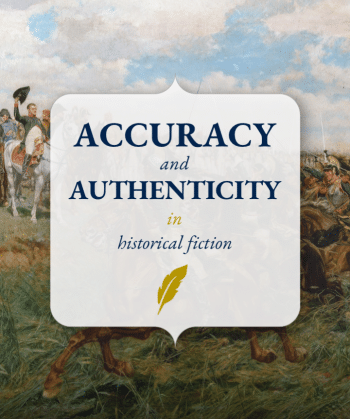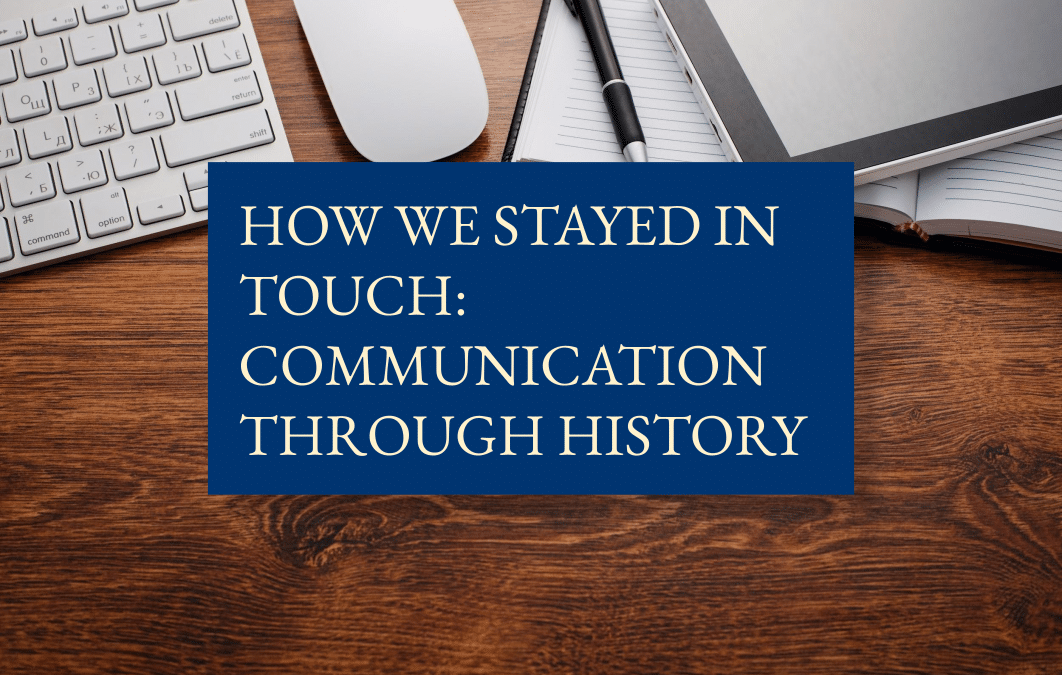Since man first scratched his thoughts into stone, humans have found ways to connect with each other. From word of mouth to the written word and the telephone, here we will take a sweeping look at how people kept in touch through the ages (mainly in England) and how you might incorporate this into your fiction.
Mediums of communication through the eras
Visual era
Our technological culture affords us multiple options for staying in touch, but in early times in human history, communication was oral and visual. Before the written word, humans made use of the voice and also used smoke signals to make sense of the world.
Written era
The origins of the written word date back to the ancient world, with civilisations in Egypt and China creating writing systems. Some of the earliest examples of writing in England can be found in the prehistoric era and also evidenced by runic inscriptions in Anglo-Saxon England.
Printed era
Both the written and the printed word accelerated our means to communicate. From the Gutenberg press in the 1450s, to the introduction of printing in England by William Caxton in the 1470s, machines putting letters into words led to the rapid production and circulation of printed books.
Music is perhaps the most accessible of entertainment and most influenced by fashions. The capacity of music to evoke and embody the past is unsurpassed. Listening to the music of an era is a fantastic way to provoke a visceral experience and transfer it to your writing.
Wired era
From the typewriter to the telegraph, the wired era heralded major changes to the speed in which we were able to communicate. We were also able to stay in touch over longer distances.
Transport
Before advances in transport such as rail and road, we relied on animals to get around. If your character was a monk in medieval times, they would have largely worked on foot and with animals.
Roads built by Romans were vital for communication networks and their use continued into the eighteenth-century. When rail was introduced, communication over long distances became quicker and easier.
Accuracy and authenticity in historical fiction

Communication in days gone by
Prehistoric
Before written history, graphic communications and art can be said to be evidence of the first recorded communications. Symbols used in cave paintings were man’s way of interpreting the world around him.
Roman
In Roman times, communication was sporadic in nature for the majority. However, both the official and the civilian would have known letters inscribed in ink, wax or on wooden tablets. The Roman military (and the military in later periods) was also known to use carrier pigeons to deliver messages!
Medieval
Communication increased in importance during periods of upheaval and conflict. During the Hundred Years’ War, towns and villages learned of news through official speech, usually through their priest. Additionally, it’s important to reference visual communication at this time, when banners and badges were used to communicate allegiance and community.
Tudor and Stewarts
The royal court was hierarchical, and this would affect a character’s ways and means of staying in touch. Consider how the method of communication might be used to reveal their intentions. A courtier might not have much choice in how they communicated formally; messengers delivered royal letters, patents and orders efficiently, but their choice for personal communication might be more revealing. Did they choose to pass coded notes between warring factions, or decide to meet in person instead of committing their thoughts to paper, which could prove dangerous?
The Tudors were prolific letter writers and the high volume of mail sent at this time indicates a sophisticated network of communication, ripe for the picking by the historical fiction writer.
50+ top online research resources for historical fiction writers

Georgian
A postal network was introduced by Henry VIII with the creation of the ‘master of the posts’, and before that the written word had been delivered informally. With the introduction of the post service for anyone with the means to pay, the Georgian and Regency periods saw an increase in the amount of correspondence. Before 1840 various factors affected the cost of sending a letter, including distance, weight and whether paid for on despatch or receipt.
The nature of the letter and how it was delivered offers a variety of options for the fiction writer. A letter allows the writer to pause and reflect on his thoughts. The unreliability of the delivery offers a writer many possibilities for plot twists and turns. Consider who was waiting for a letter that never arrived? What happened after a missive was misdelivered and how did this change the course of the recipient’s life? The possibilities are wonderfully endless.
Victorian
The subject of communication is central to understanding society through the ages. With the success of telegraph technology of the 1840s and the creation of the telephone by Alexander Graham Bell in 1876, the Victorians had various methods for staying in touch.
At this point, we can’t ignore the creation of festive greetings. In 1843 Henry Cole created the Christmas card as a time-saving measure which solved the problem of unanswered mail during the busy festive period. Coupled with the creation of the Uniformed Penny Postage, the sending of decorated visiting cards and letterheads over the festive season was introduced but did not gain traction due to high costs. Christmas postal greetings gained wide success in the 1870s, largely due to Prince Albert’s introduction of German Christmas traditions, as well as the popularity of the halfpenny postage and changes in printing.
Early twentieth century
Before the telephone became commonplace in people’s homes, staying in touch meant a trip to the post office, or to the telephone box on the other side of the village. When telephones were introduced to offices and homes, how might your character react to the technology? Did they see this as intrusive, or did they welcome the convenience?
How might you utilise the timing of communication in your writing? For example, the regular intervals of the postman’s delivery. How might the shrill ring of the telephone at 3pm prompt each evening effect your character’s mood? Who’s at the end of the line: his aging mother or his new lover?
Evidently your characters will communicate with each other and move the plot along with more than just dialogue on the page. Each method of communication offers its own unique challenge and opportunity for the fiction writer.
We hope you’re inspired by this summary of how we stayed in touch through the ages.
Karen Bryony Rose is a guest contributor to The History Quill. An English Literature and History graduate and qualified archivist, Karen has always been fascinated by the past. She balances her time as an information professional, writer and journalist. She’s currently working on her historical dual timeframe novel and uses her love of walking to daydream and plot. She procrastinates on Twitter @SunSparks4.
Do you write historical fiction?
Join our email list for regular writing tips, resources, and promotions.

